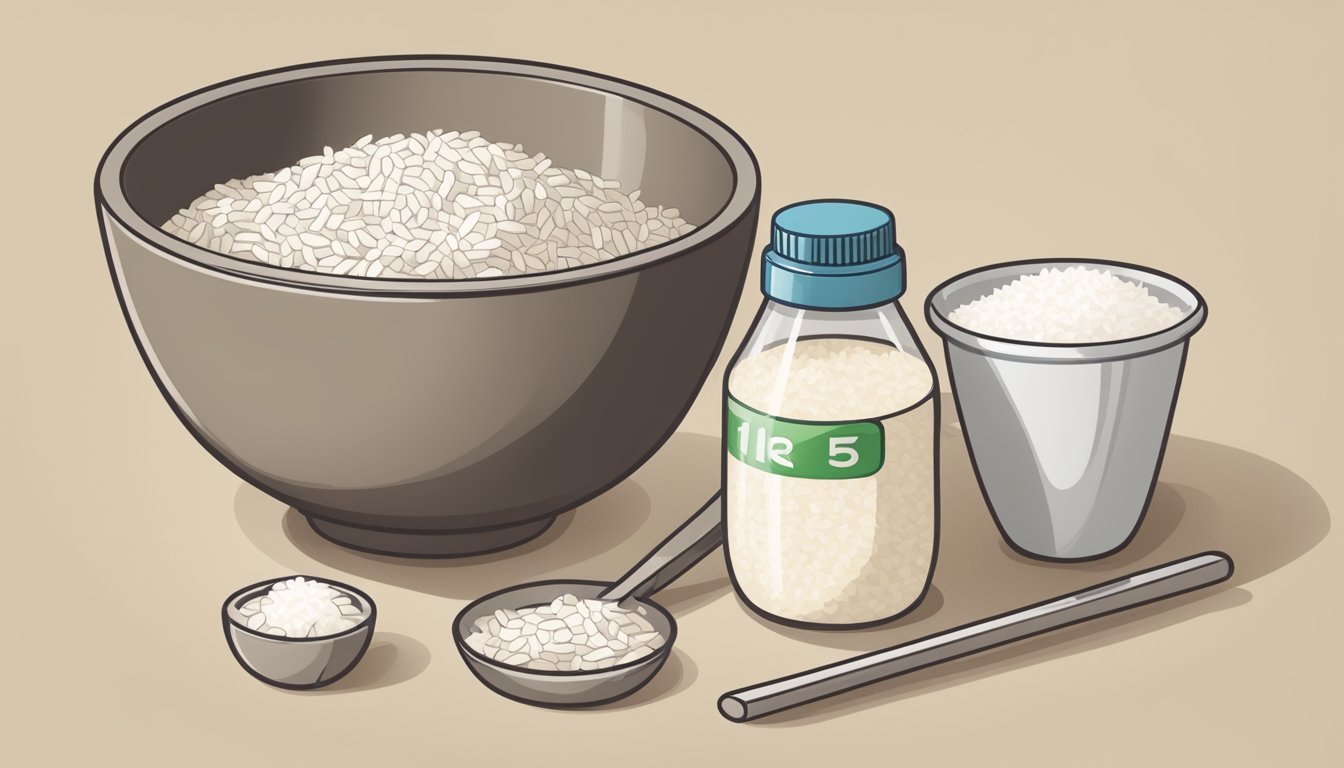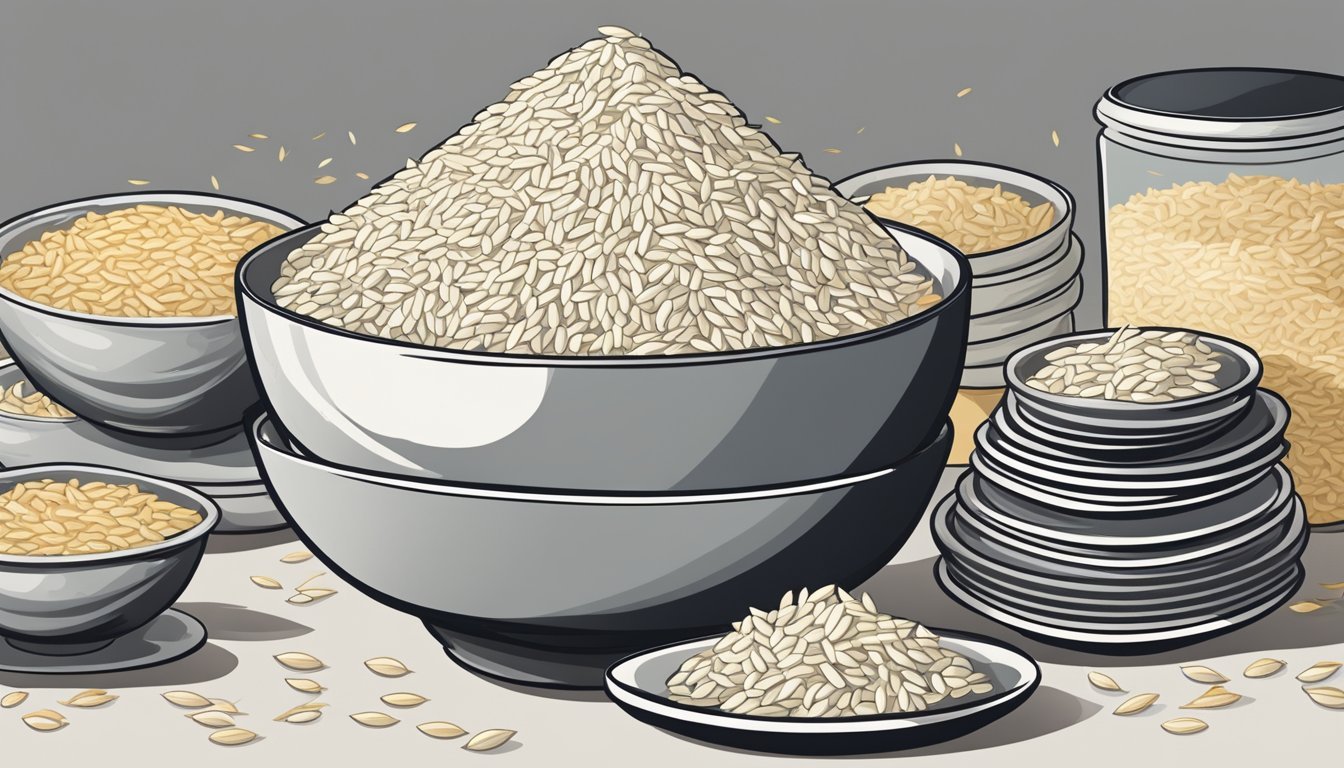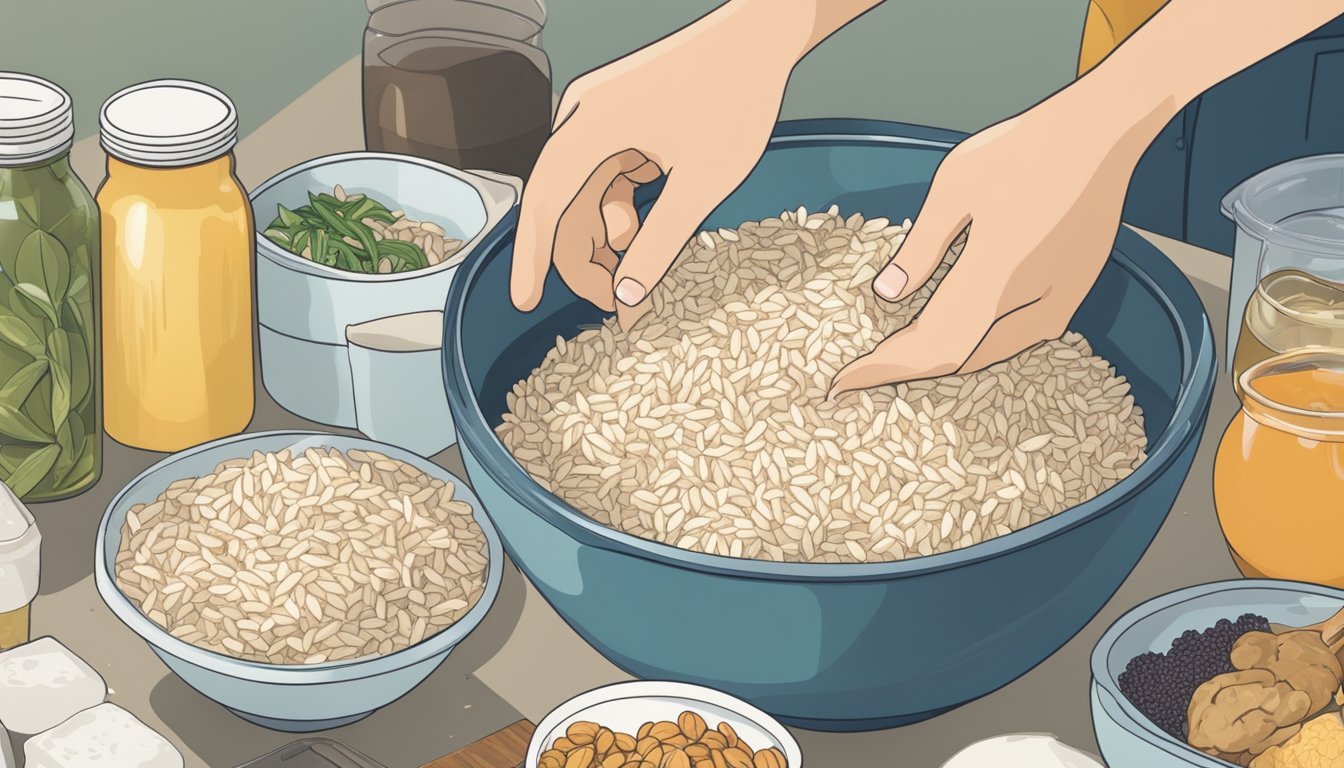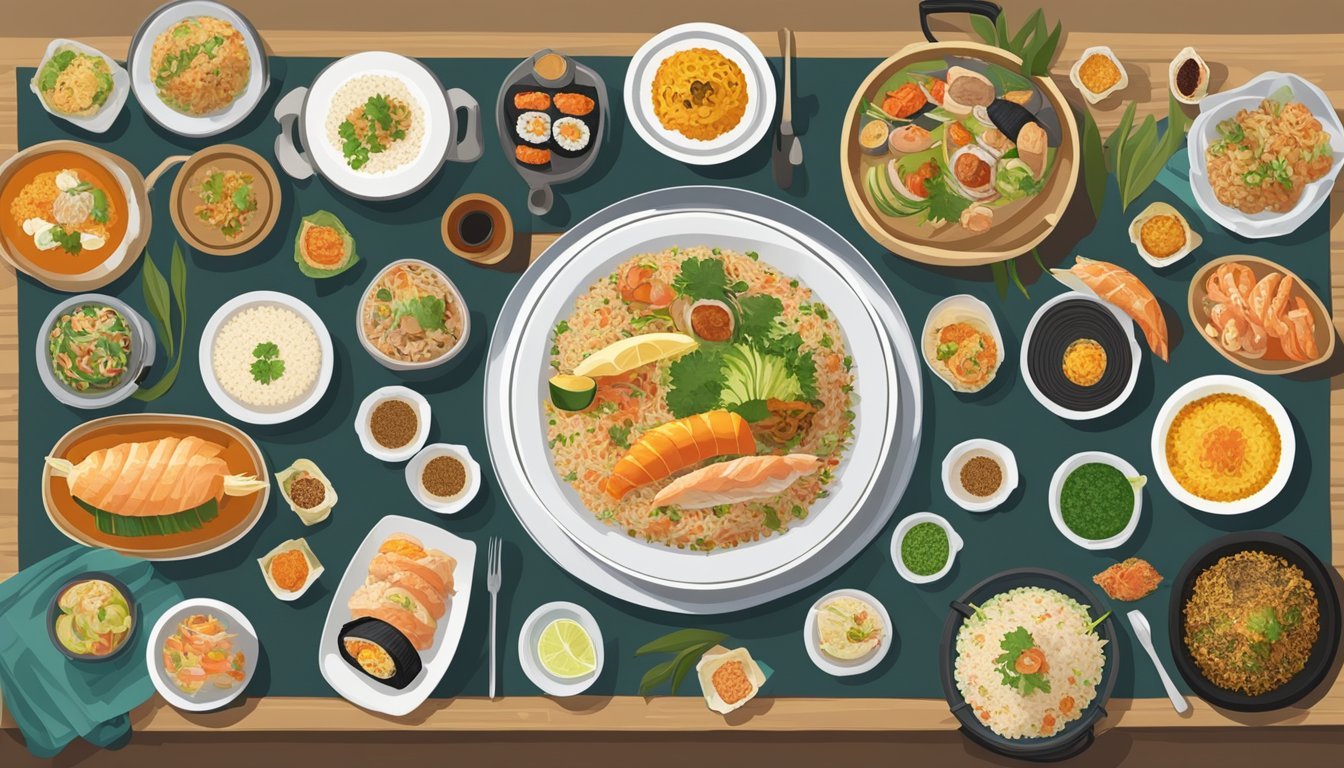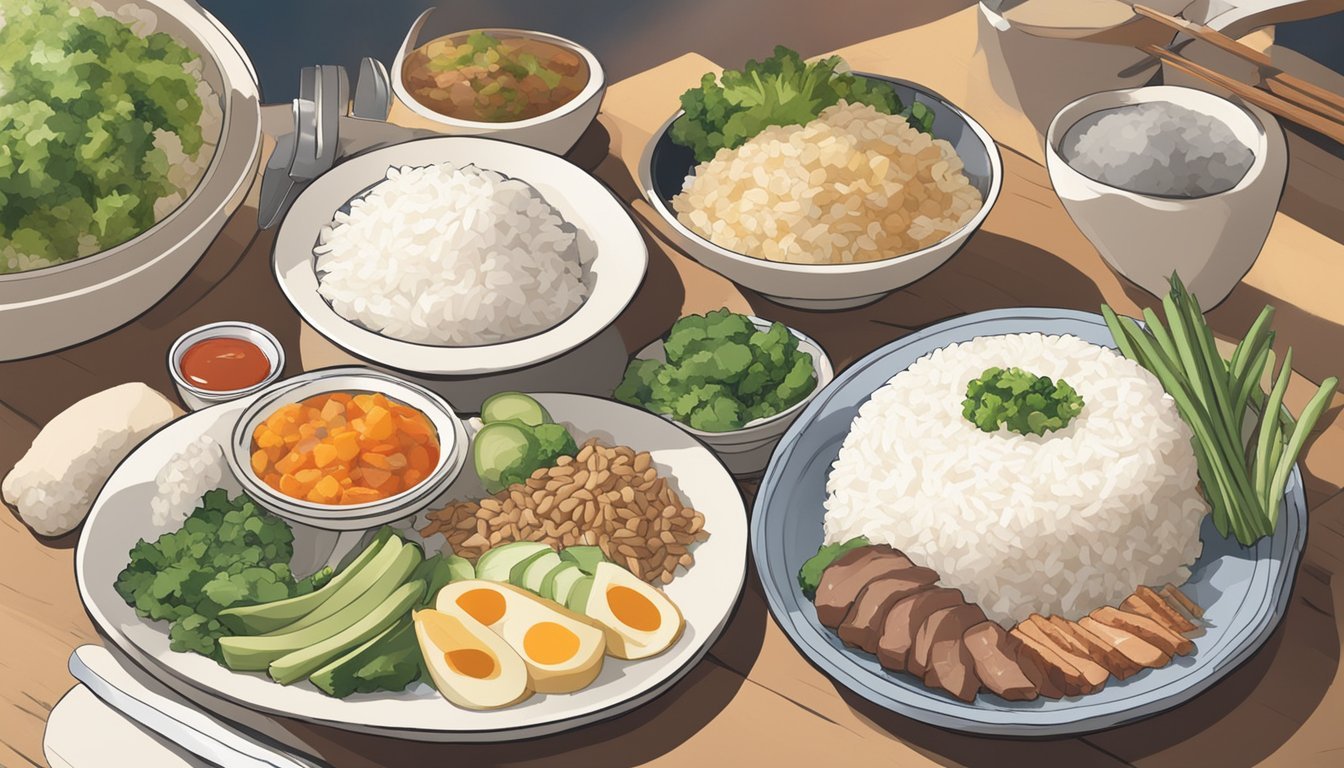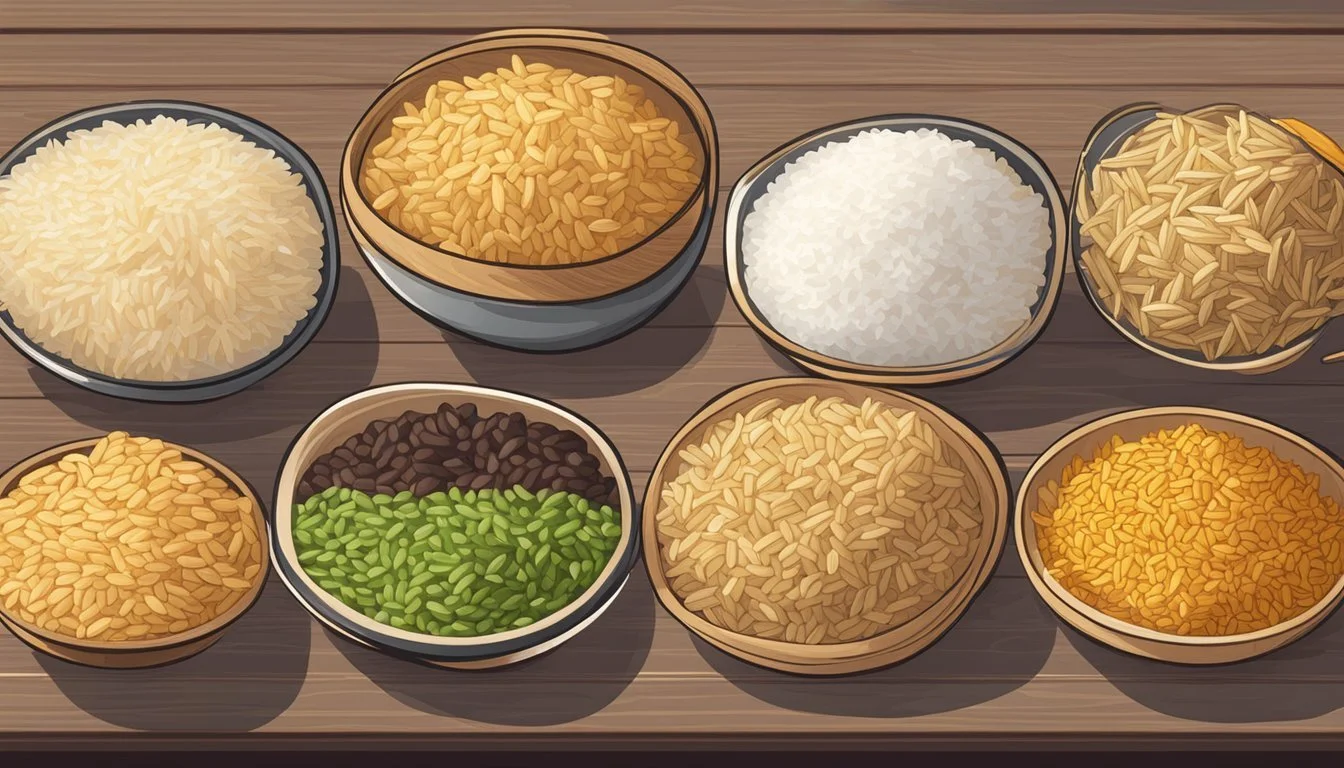How Many Servings of Rice Per Day Is Too Much?
Understanding Healthy Portions
Determining the appropriate daily intake of rice involves considering several nutritional factors. Rice, a staple food for over half the world's population, provides energy primarily in the form of carbohydrates. A single serving size for adults is typically ½ cup of cooked rice. This quantity is a practical guideline for meal planning, while also allowing room for variety in a balanced diet. However, considering an individual's total dietary needs is crucial as consumption well beyond the required portion sizes could contribute to excessive calorie intake and potential health issues.
The varied nutritional profiles of different types of rice, such as white, brown, wild, and black rice, also play a role in assessing their impact on daily dietary needs. Whole-grain varieties, like brown and wild rice, offer more fiber, protein, and micronutrients compared to white rice, which has undergone more processing and lacks these nutrients. But despite their health benefits, moderation is still key. Too many servings of even the healthiest rice option can lead to an unbalanced diet that skews heavily carbohydrate-based, crowding out other essential food groups.
Assessing how much rice per day translates into 'too much' can be complex as it deeply depends on individual factors like age, gender, physical activity level, overall health, and specific dietary goals. Nutritionists typically recommend that grains like rice should constitute about a quarter of your plate for a balanced meal. For most people, sticking to this proportion and taking into account the precise serving sizes can prevent the potential pitfalls of rice overconsumption, such as weight gain and blood sugar imbalances.
Nutritional Profile of Rice
Rice is a staple food for more than half the world's population, with a diverse nutritional profile that varies depending on the type of rice. Whether consumed as a primary source of carbohydrates or incorporated as part of a balanced meal, rice provides energy and a variety of nutrients.
Macronutrients in Rice
Carbohydrates are the primary macronutrient found in rice, typically providing about 45-53 grams per cup of cooked rice. Rice also contains protein, approximately 4-5 grams per cup, while the fat content is usually less than 1 gram. The carbohydrate component is predominantly starch, with a very small amount of dietary fiber, particularly in white rice.
Vitamins and Minerals Present
Rice is not a significant source of vitamins and minerals; however, it does contribute some essential nutrients to the diet. It can provide small amounts of iron, magnesium, and folate. The mineral content is higher in varieties like brown rice, which contain the bran and germ layers.
White vs Brown Rice Nutrition
White rice has had its bran and germ removed, which results in a lower fiber content and fewer nutrients compared to brown rice. Brown rice retains its bran and germ, providing more fiber, vitamins, and minerals, like magnesium and iron.
Glycemic Index and Blood Sugar Impact
The glycemic index (GI) is a measure of how quickly a food raises blood sugar levels. White rice has a higher GI, potentially impacting blood sugar levels more rapidly, which might be a consideration for individuals with diabetes. Brown rice has a lower GI due to its higher fiber content.
USDA Guidelines on Grains
The USDA recommends making at least half of your grain servings whole grains. According to the Dietary Guidelines for Americans, adults should consume 3 to 4 ounces of grains daily, with at least half being whole grains, which can include brown rice.
Nutrient-Dense Alternatives to Rice
For those looking for nutrient-denser alternatives to rice, whole grains like quinoa, barley, and oats, as well as nuts, seeds, beans, and peas offer more protein, fiber, and various micronutrients.
Understanding FoodData Central Nutrition Information
The USDA FoodData Central is a comprehensive resource that provides detailed nutrition information for numerous types of rice. It offers insights into calories, macronutrient distribution, vitamins, and minerals present in rice.
Rice in Various Diets
Rice is a versatile grain that fits into many dietary patterns. In a low-carb or healthy diet, portion control of rice is critical due to its high carbohydrate content. Rice may be included in vegetarian, gluten-free, and culturally specific diets.
Comparing Rice to Other Grains
When compared to other grains like wheat or barley, rice is generally lower in fiber but can be easier to digest. This makes rice a palatable option for those with sensitive digestive systems.
Rice, Athletes, and Energy Needs
Athletes may include rice in their diets as a source of carbohydrates for energy. The type of rice chosen can affect the release of energy, with brown rice providing a more sustained energy release due to its fiber content.
Rice Consumption During Pregnancy and Nursing
For pregnant and nursing women, rice can be a valuable energy source. Whole grain versions like brown rice offer nutrients important for fetal development and breast milk production, such as iron and folate.
Serving Sizes and Measurement
When considering rice consumption, understanding and measuring the correct serving size is crucial to ensure dietary balance and adequate portion control.
Standard Rice Serving Sizes
For adults: The recommended serving size is ½ cup of cooked rice, which is roughly the size of a medium apple.
As part of a meal: For individuals using rice as a side dish, a ½ cup per person is typical.
How Much Rice to Cook
Dry to Cooked: Generally, 1 cup of dry rice will yield 2 cups of cooked rice.
Meal Planning: When cooking for more people, simply double the ratios, e.g., 2 cups uncooked rice to get 4 cups cooked rice.
Using a Kitchen Scale for Accurate Servings
Precision: A kitchen scale can give exact measurements, where 100 g of uncooked rice equals 200 g of cooked rice.
Consistency: For regular monitoring, a scale ensures consistent serving sizes.
Understanding Cooked vs Uncooked Rice Portions
Expansion: Uncooked rice approximately doubles in size when cooked, so ¼ cup of uncooked rice becomes about ½ cup cooked.
Labels: Always refer to the package for specific rice-to-water ratios, as they might vary.
Charting Servings for Individual and Meal Planning
Uncooked Rice (cups) Cooked Rice (cups) Serves (people) 0.25 0.5 1 0.5 1 2 1 2 4 2 4 8
Ratios adjusted for main vs. side dish servings.
Adjustments for Specific Dietary Needs
Intake varies: Adjust portions based on individual dietary guidelines and activity level.
Dietary Restrictions: Consider the type of rice and its specific nutritional content to meet dietary restrictions.
Health Implications of Excessive Rice Consumption
Excessive consumption of rice carries potential health risks, including correlations with increased weight and metabolic disturbances. This is particularly critical considering rice's predominance in many diets worldwide.
Correlation with Weight Gain and Obesity
Rice is a rich source of carbohydrates, with one serving providing a substantial amount of calories. When one consumes more calories than the body burns, this surplus energy is stored in the form of fat, contributing to weight gain. The risk of obesity escalates further when rice is consumed in large quantities without adequate physical activity.
Furthermore, rice, especially white rice, has a high glycemic index, meaning it can cause a rapid spike in blood sugar levels. Frequent spikes can lead to insulin resistance, a precursor to diabetes. White rice also offers less nutrition in terms of fiber, vitamins, and minerals, unlike its brown rice counterpart, which is associated with a lower risk of weight gain due to its higher fiber content. Maintaining a healthy body weight demands a balance of nutrient intake and physical activity, and the key is to moderate rice consumption to avoid excess calories and fat accumulation.
Preparation and Cooking Techniques
In cooking rice, whether as a main dish or a side, achieving the perfect texture rests heavily on mastering the water to rice ratio. Different rice varieties may require specific water amounts to ensure optimal results.
Optimal Water to Rice Ratio for Cooking
The water to rice ratio is a crucial factor that can affect the consistency and quality of the cooked rice. Generally, the ratio can be adjusted based on the type of rice being prepared. Below is a concise guide on various rice varieties and their corresponding water to rice ratios:
White Long-Grain Rice: For every cup of rice, use 1 1/2 to 2 cups of water.
Brown Rice: Brown rice typically requires more water due to its bran layer. Use about 2 1/4 cups of water per cup of rice.
Short-Grain Rice: Short-grain rice, often used for sushi (What wine goes well with sushi?), has a stickier texture and requires around 1 1/4 cups of water for every cup of rice.
To cook rice, one should bring the water to a boil, adding the rice when it's at a rolling boil. Then, reduce the heat to a simmer and cover the pot to allow the rice to absorb the water fully. The cook time will vary by rice variety:
White Rice: Cooks in approximately 18-20 minutes.
Brown Rice: Usually takes longer, around 30-45 minutes, due to its higher fiber content.
For both as a main dish and a side, one must observe the rice and water while cooking to ensure that the rice doesn't become overcooked or remain too firm.
Making the Most of Leftovers
Cooked rice, when properly stored, can be a versatile staple for various dishes throughout the week. The key to maximizing leftovers is understanding the best methods for storage and discovering innovative ways to bring new life to already cooked rice.
Storing and Freezing Rice
To ensure the safety and quality of leftover rice, it should be cooled quickly, ideally within an hour of cooking, and then stored in the refrigerator. Rice can be refrigerated for up to four days. For longer storage, rice can be frozen which extends its usability for up to six months. Here are the steps for refrigerating and freezing:
Cool the Rice Rapidly: Spread it out on a baking sheet or tray to reduce the temperature quickly.
Store in an Airtight Container: Transfer the cooled rice to an airtight container, which preserves its moisture and texture.
Freeze (if necessary): Place rice in freezer bags, label with the date, and lay flat in the freezer.
Creative Ways to Reuse Cooked Rice
Leftover rice can be the foundation for many delicious creations beyond just a simple side dish. Two popular options are:
Fried Rice: This dish is an excellent way to reuse day-old rice. Combine it with vegetables, protein, some soy sauce, and egg to make a complete meal.
Rice Salad: Revitalize your leftover rice by mixing it with fresh herbs, vegetables, and a tangy dressing.
For those who prefer a table format:
Dish Type Suggested Ingredients Fried Rice Vegetables, Protein, Soy Sauce, Egg Rice Salad Herbs, Vegetables, Dressing
By following these storage guidelines and exploring creative recipes, one can easily reuse leftover rice, reducing waste and enjoying it in new and exciting ways.
Rice in Global Cuisines
Rice, a versatile cereal grain, plays a central role in the diets of various cultures worldwide, often reflecting the unique flavors and traditions of each region.
Rice as a Staple Food in Different Cultures
In India, rice is a dietary linchpin, serving as the base for a myriad of dishes from fluffy Basmati rice accompanying spicy curries to sweet rice pudding, known as kheer. These dishes not only provide sustenance but also hold a deep cultural and religious significance for many communities.
Italy boasts its own revered rice dish, risotto. This creamy, slow-cooked rice meal is a testament to the Italian art of transforming simple ingredients into luxurious fare. The use of high-starch, short-grain rice like Arborio allows risotto to achieve its distinctive texture.
Heading east, it is a well-known fact that rice is indispensable in Japanese cuisine. Sushi rice, seasoned with vinegar, forms the foundation of sushi, showcasing the grain's sticky characteristic that complements the freshness of raw fish and other toppings.
The preference for rice also extends to various snack forms. In some cultures, rice is puffed or popped, similar to popcorn. It's consumed as a light, savory snack, illustrating rice's adaptability from main courses to snackable treats.
Each of these dishes and preparations highlights rice as not just a staple food, but a versatile ingredient that is deeply interwoven with cultural identity and culinary expression.
Key Food Pairings with Rice
When considering portion control and nutritional balance, rice serves as a versatile carbohydrate that pairs well with various proteins, vegetables, and spices. It is a global staple that forms the basis for many healthy and satiating meals.
Rice and Protein Combinations
Meat:
Beef: A robust option, beef provides high-quality protein and iron which pairs well with brown rice. A typical serving size might be 3 ounces of beef with 1/2 cup of cooked rice.
Chicken: Lean and rich in protein, a 3-ounce serving of chicken breast complements the lightness of white or brown rice.
Pork: Often used in stir-fries, a 3-ounce serving of pork alongside a similar portion of rice can be a satisfying meal.
Fish: A heart-healthy protein, a 3-ounce piece of salmon or cod, offers omega-3 fatty acids and pairs excellently with a 1/2 cup serving of rice.
Shrimp: Low in calories and high in protein, a serving of 3-4 large shrimp with rice can make for a light and flavorful dish.
Plant-based Proteins:
Tofu: A staple in vegetarian and vegan diets, 1/2 cup of tofu provides a good amount of protein and can be enjoyed with a side of rice.
Beans and Lentils: A cup of these can offer both protein and fiber, complementing the texture of rice.
For each pairing, vegetables can be added to increase the meal's nutrient density and serving size without considerably adding to the calorie count.
Specialty Rice Types and Their Uses
Specialty rice varieties cater to distinct dishes and culinary applications, offering unique textures, flavors, and nutritional benefits. Understanding their specific uses can enhance your cooking and dining experience.
Arborio for Risotto and Specialty Dishes
Arborio rice is a type of short-grain rice named after the town of Arborio in Italy. It is known as the traditional rice for making risotto, an Italian dish known for its creamy texture. Arborio rice is starchy, which is essential for risotto because as it cooks, the grains release starch, giving risotto its signature creaminess without the need for cream.
Uses: Risotto, rice pudding, and other creamy dishes.
Cooking tip: Slowly simmer Arborio rice while gradually adding liquid, typically broth, to achieve the perfect risotto.
Wild Rice and Its Unique Nutritional Properties
Wild rice isn't actually rice but the seed of an aquatic grass. It has a chewy outer sheath with a tender inner grain and a distinct, nutty flavor. This type of rice is notable for its high protein content relative to other rice varieties and provides essential amino acids.
Nutrition profile per 100 grams (raw):
Calories: 357 kcal
Protein, fiber, and antioxidant-rich
Uses: Salads, soups, stuffing, or as a side dish.
Cooking tip: Wild rice typically takes longer to cook than white rice and usually requires more water.
Conclusion
When integrating rice into a healthy diet, it is crucial to consider portion sizes and the overall context of an individual's nutrition and energy needs. The standard serving size of cooked rice recommended for adults is about ½ cup. This quantity approximately provides 100-110 calories, though this can vary depending on the type of rice.
Eating rice in moderation contributes to a balanced diet, offering essential nutrients. Whole-grain varieties such as brown, wild, and black rice, are preferable, providing more fiber, protein, and other nutrients compared to white rice.
A person's activity level, age, and specific nutritional requirements will influence the ideal intake. Excessive consumption of rice, especially white rice which has a higher glycemic index, may lead to increased calorie intake and potential weight gain, thus moderation is key.
Rice Type Fiber Protein White Rice Low Moderate Brown Rice High High Wild Rice High High
A dietitian can offer guidance tailored to individual health goals and needs. In the context of overall dietary patterns, it's important to achieve a balance, incorporating a variety of foods alongside rice to ensure a diverse intake of nutrients.


